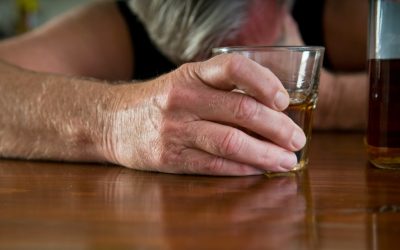Guide to Sober Homes, Transitional Housing & Halfway Houses FHE Health
This may include finding and maintaining employment, attending school, or participating in volunteer activities. Halfway houses typically have rules and expectations in place http://www.mirea.org/tema/28-zabavnoe-v-seti/page-20 to help residents maintain their sobriety and build healthy habits. These may include curfews, regular house meetings, and mandatory participation in recovery activities.
Pros and Cons of Halfway Houses
- Halfway houses offer a dorm-like setting, while sober homes are in quiet residential areas and focus more on independent living.
- In several halfway houses, visitors can have video visits with the residents using their own mobile devices or computers.
- We often find ourselves at a crossroads where decisions must be made—decisions that could alter our paths forever.
- Owner Genc Salihu says she’s part of the family, and people turn up just to see and pet Lule.
- In the most recent survey, 83% of Republicans say protecting gun rights is more important, while 79% of Democrats prioritize controlling gun ownership.
Although halfway houses share a lot in common with sober-living homes, there are a few key differences that set them apart. Halfway houses serve as the halfway point between an institution and independent society, with residents usually coming from either correctional or inpatient treatment facilities. Rules, guidelines, and what to expect at a halfway out are now more precise than before. https://ffforever.info/index.cgi?act=Profile;CODE=03;MID=70-1163756393 These living homes aren’t just places for recovery—they’re stepping stones back into society. Violence prohibition means that acts of aggression towards other residents will not be tolerated under any circumstances—again, with possible expulsion being a consequence. Call us now if you have questions about what halfway houses offer or if someone close needs help transitioning into one.
Transitional Housing and Sober Living in New York, NY: Find a Safe Place to Live and Recover
But it should be noted that regular monitoring, auditing, and data reporting should be the norm in the first place. Halfway houses are just as much a part of someone’s prison sentence as incarceration itself, but they are subject to much less scrutiny than prisons and jails. This lack of guidelines and oversight has ensured that people in halfway houses are not being aided in safely and effectively rebuilding their lives after serving time in jails and prisons. People who are working through recovery often enter residential programs for intensive care. However, walking back into the same life — the same home, surrounded by the same people and often in the same high-risk environment — is never ideal. Those who lack a stable, drug-free and alcohol-free living environment are at high risk of relapsing.

Family and Children’s Programs
- Halfway houses are dorm-style living spaces owned by a government or private agency.
- While it’s natural to struggle a bit when first tasked with a new set of responsibilities, residents may ask for help from their peers if they cannot complete the cleaning tasks by themselves.
- A study published in the Journal of Psychoactive Drugs by the Alcohol Research Group Public Health Institute showcased the importance of social and environmental factors in recovery.
- The amount of time you’ll stay at a halfway house varies, but most stays are between three to twelve months.
- Your recovery doesn’t end once you leave a halfway house; instead, it’s more akin to graduating from one level to another – each requiring unique tools and strategies for success.
By offering a supportive and substance-free environment, halfway houses provide a crucial buffer between the structure of a rehab center and the challenges of living independently. This transitional period allows you to continue building upon the skills and habits you developed during treatment, while gradually adjusting to increased levels http://electric-alipapa.ru/infusions/shoutbox_panel/shoutbox_archive.php?rowstart=740 of personal responsibility and freedom. Research shows that individuals who participate in sober living programs after completing treatment have significantly lower relapse rates than those who do not. These official transitional housing locations serve over 10,000 offenders recovering from drug abuse and working on their mental health.
- The term halfway house can refer to a number of transitional living environments that help people re-enter society.
- In some cases, residents may be denied access to certain privileges, such as phone calls to a loved one.
- While regular population reports are not available, 32,760 individuals spent time in federal RRCs in 2015, pointing to the frequent population turnover within these facilities.
- Pew Research Center conducted this analysis to summarize key facts about Americans’ relationships with guns.


Comments are Closed